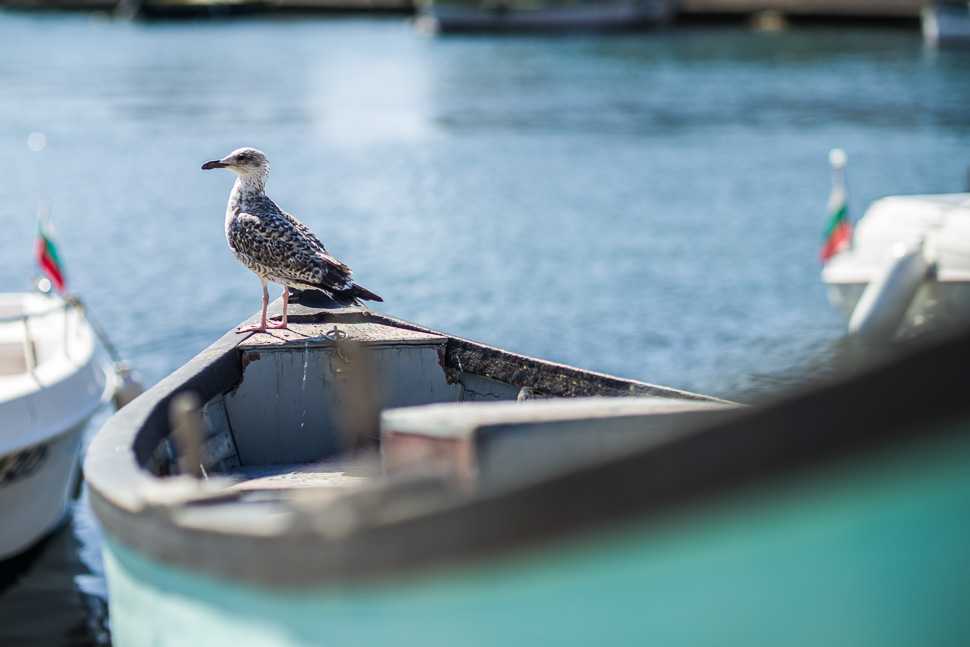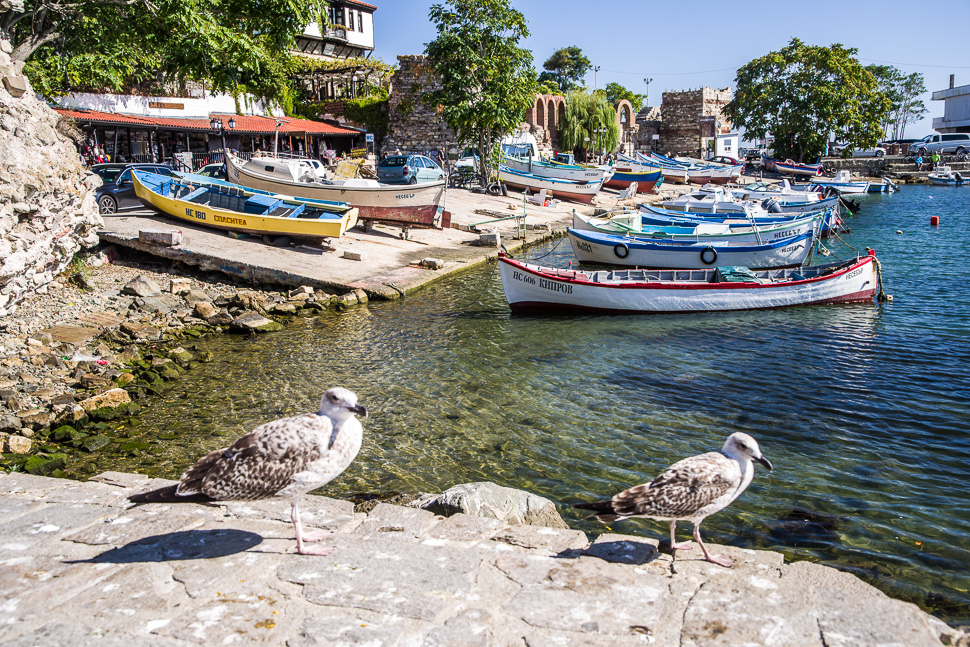The sun was back – perfect to visit the historic town of Nesebar at the Black Sea with its many churches on an “island”.
The “Pearl of the Black Sea” – as Nesebar is called – is a rich city-museum defined by more than three millennia of ever-changing history. The ancient part of the settlement lies on a peninsula which was previously an island, now connected by a short dam. It bears evidence of occupation by a variety of different civilisations over the course of its existence.
 |
| Modern part of Nesebar with a beautiful beach |
 |
| Layout of the island with the dam at the right |
There is evidence of five chronological periods of urbanisation on the peninsula starting at the end of the second millennium B.C.: the Thracian protopolis, the Greek colony Mesambria, a Roman-ruled village to the Early Christian Era, the Medieval settlement and a Renaissance era town.
Bronze and silver coins were minted in the city since the 5th century BC, and gold coins since the 3rd century BC.
 |
| Nesebar from the distance |
 |
| Ruins of an old church |
Due to the city’s abundance of historic buildings, UNESCO included it in its list of World Heritage Sites. Nesebar is said to be the town with the highest number of churches per capita. Until today, a total of forty churches survived wholly or partly.






















